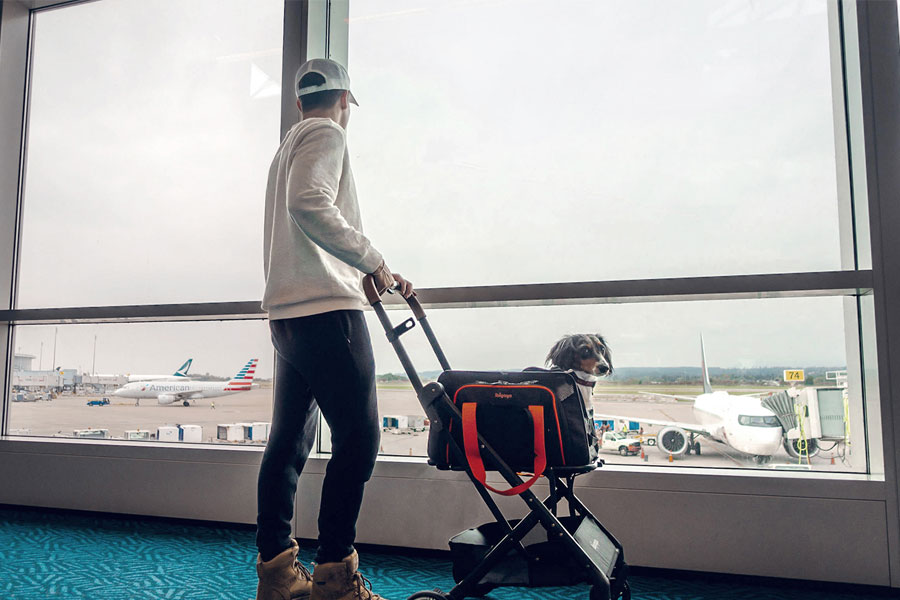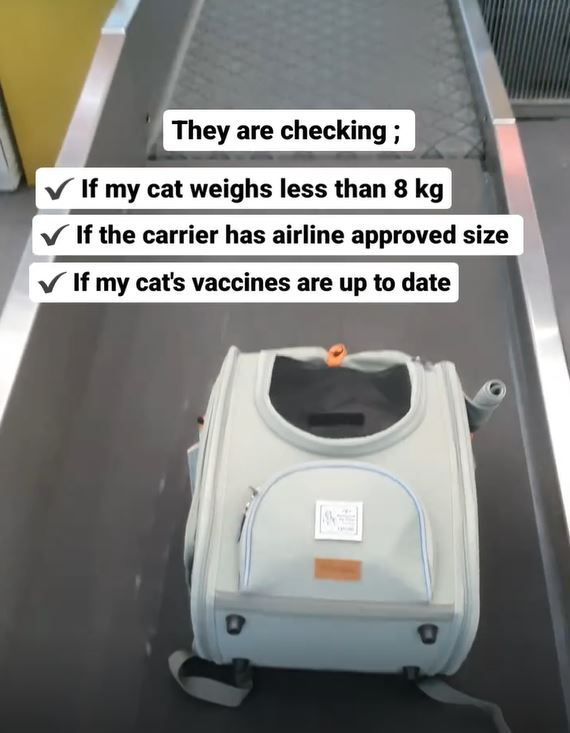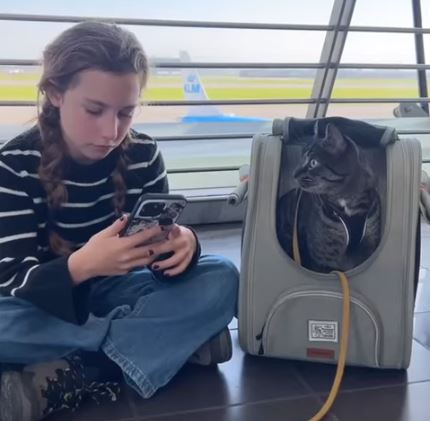It might be thrilling and fulfilling to take your pet on a trip to Europe, but thorough preparation is necessary to guarantee a trouble-free trip. Pets are allowed in much of Europe, although there are rules that must be observed in each nation.
This guide will take you through the necessary preparations to ensure a stress-free journey, whether you’re moving to Europe or taking a holiday with your pet.
1. Recognize the EU Pet Travel Requirements
 The EU Pet Passport: is a unified pet travel program run by the European Union (EU), makes it easier to travel with pets across EU nations. Your pet must fulfill certain conditions in order to enter the EU if you are going from a non-EU nation, such as the US, Canada and Australia.
The EU Pet Passport: is a unified pet travel program run by the European Union (EU), makes it easier to travel with pets across EU nations. Your pet must fulfill certain conditions in order to enter the EU if you are going from a non-EU nation, such as the US, Canada and Australia.- Microchipping: Your pet must be microchipped with an ISO 11784/11785 compliant 15-digit microchip.
- Rabies Vaccination Certificate: Your pet must be vaccinated against rabies after the microchip is implanted. The vaccination must be administered at least 21 days before travel.
- EU Pet Health Certificate: If you’re traveling from a non-EU country, your pet will need an EU health certificate issued by an accredited veterinarian and endorsed by your country’s official animal health authority.
- Tapeworm Treatment (for dogs): If you’re traveling to Ireland, Finland, Malta, or Norway, your dog must be treated for tapeworm 1–5 days before arrival. Eastern Europe (Serbia, Montenegro, Croatia, Austria, Budapest) is not too strict to it but other countries does.
2. Verify the requirements specific to your country.
The majority of European countries are covered by the EU Pet Travel Scheme, although some have extra restrictions. For instance:
- United Kingdom: The UK has stringent regulations, such as treating dogs for tapeworms and requiring certain paperwork. Pets are only allowed to enter the UK through approved entry points. UK is one of the non pet-friendly country.
- Non-EU Countries: Verify the particular pet import laws of any non-EU European nations you may be visiting, such as Switzerland or Iceland. Netherlands and Italy are among countries with easy to access for traveller with small pet.
3. See Your Veterinarian
Make an appointment with your veterinarian before to your trip to make sure your pet is healthy and up to par. Your veterinarian will:
- Make sure your pet’s microchip is operational and compliant by verifying microchipping.
- Vaccinate: Make sure your pet has received the most recent rabies vaccination and give them any other shots they need.
- Issue documentation: If your pet already has an EU pet passport, update it or present an EU health certificate.
4. Select the Appropriate Mode of Transportation

Making the decision to ship your pet to Europe is an important one. Air travel and sea travel are the two primary possibilities.
Air Travel
In-cabin vs. cargo: If your pet is traveling with you in an airline-approved carrier, you may be able to bring them in the cabin. The cargo hold, which is pressurized and has a controlled temperature, is usually where larger pets travel.
- Pet-friendly airlines: Look up and contrast the policies of airlines that accept pets. KLM, Lufthansa, and Air France are a few well-known pet-friendly airlines.
- Direct flights: To cut down on stress and lower the possibility of delays or improper handling, schedule a direct trip wherever feasible.
Airlines pet requirements
If you are aware of each airline’s unique pet carrier regulations and policies, traveling with your pet on European airlines can be easy and stress-free. Though their policies on in-cabin travel, cargo transportation, carrier dimensions, and prices differ, European airlines are generally pet-friendly. A thorough rundown of some of the main European airlines’ pet policies can be found below.
Pet-friendly Airlines in Europe
1. The Lufthansa
One of the most pet-friendly airlines in Europe is Lufthansa, which permits pets to fly as cargo as well as in the cabin.
Inside-Cabin Transportation
- Household birds, cats, and small dogs are eligible.
- The maximum dimensions of the small pet carrier are 55 cm by 40 cm by 23 cm (21.6 in x 15.7 in x 9 in).
- Weight restriction: The pet and carrier cannot weigh more than 8 kg (17.6 lbs) together.
- It costs between €50 and €110, depending on the itinerary.

Transporting Cargo
- Pets that are larger than the weight or size restrictions in the cabin are eligible.
- IATA-compliant crates with sufficient room and ventilation are required by carriers.
- Fee: Vary according to destination and crate size.
Depending on their size and weight, pets are permitted to fly with Air France in the cabin, as checked luggage, or as cargo.
Inside-Cabin Transportation
- Cats, guide dogs, and small dogs are eligible.
- The maximum dimensions of the small pet carrier are 46 cm by 28 cm by 24 cm (18 in x 11 in x 9.5 in).
- Weight restriction: The pet and carrier cannot weigh more than 8 kg (17.6 lbs) together.
- €20–€125 (depending on the route) is the fee.
Cargo or Checked Baggage
Large pet dog are elligible for cargo
- Soft Sided or Hard Sided Dog Crate requirements: crates that meet IATA standards.
- Fee: Vary according to destination and crate size.
3. KLM Airlines: Another airline that welcomes pets is KLM, which provides both in-flight and cargo travel options.
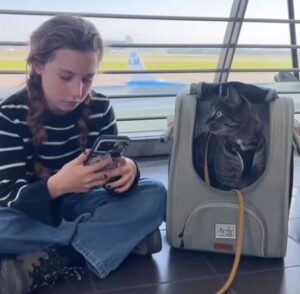
Inside-Cabin Transportation
- Cats, guide dogs, and small dogs are eligible.
- The maximum dimensions of the carrier are 46 cm by 28 cm by 24 cm (18 in x 11 in x 9.5 in).
- Weight restriction: The pet and carrier cannot weigh more than 8 kg (17.6 lbs) together.
- Depending on the itinerary, the fee ranges from €75 to €400.
Transporting Cargo
- Pets that are larger are eligible.
- Carrier requirements: crates that meet IATA standards.
- Fee: Vary according to destination and crate size.
4. SWISS stands for Swiss International Air Lines. Pets are permitted to fly on SWISS as cargo, checked luggage, or in the cabin.
Inside-Cabin Transportation
- Household birds, cats, and small dogs are eligible.
- The maximum dimensions of the small dog or cat carrier are 55 cm by 40 cm by 23 cm (21.6 in x 15.7 in x 9 in).
- Weight restriction: The pet and carrier cannot weigh more than 8 kg (17.6 lbs) together.
- Depending on the trip, the fee ranges from CHF 70 to 200.
Cargo or Checked Baggage
- Pets that are larger are eligible.
- Carrier requirements: crates that meet IATA standards.
- Fee: Vary according to destination and crate size.
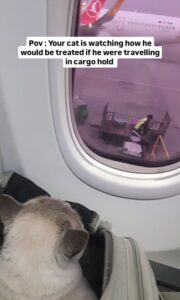
General Tips for Airline Approved Pet Carriers In-cabin under the seat or cargo
- IATA Approved dog or cat carrier : Ensure your pet carrier meets International Air Transport Association (IATA) standards for safety and comfort.
- Ventilation: The pet carrier must have adequate ventilation on at least three sides.
- Secure Locking: The cat or cat carrier should have secure locks to prevent accidental openings.
- Comfort: Line the pet carrier for airlines with absorbent padding and include a familiar blanket or toy to reduce stress.
Travel by Sea
- Pet-friendly ferries: Some ferry companies permit pets on board if you’re going to or from the UK to Europe. Make reservations in advance and review their policies.
- Cruise ships: While some cruise companies, such as Cunard’s Queen Mary 2, provide kennel facilities for transatlantic voyages, very few allow pets.
5. Get Your Pet Ready for Travel
Pets may experience anxiety when traveling, therefore it’s critical to prepare them for the trip. Here’s how:
- Get your pet used to their pet carrier: Introduce your pet to their dog or cat carrier well in advance if they will be traveling in one. To help them feel less anxious, let them explore it and spend time inside. Use pet threat to encourage your pet to get inside the pet carrier. Give rewards the moment the pet stay inside. Move the pet carrier or stroller around the house slowly and outside until it became normal to your pet.
- Practice small trips: To assist your pet become accustomed to traveling, take them on quick vehicle journeys to a new locations. The idea is that the pet carrier or pet stroller will become the safest place for pet when the pet travel.
- Pack familiar items: To make your pet feel more at ease throughout the trip, bring their favorite toys, blankets, and snacks.
6. Bring a Pet Travel Kit
Your pet will require its own travel package, just like you would when packing a luggage for yourself. Among the necessary components are:
- Food and water: Bring a portable bowl for water and enough of your pet’s usual travel food for the journey.
- Medication: Please bring a copy of the prescription for any drugs your pet needs.
- Leash and collar: Make sure your pet wears a collar that is securely fastened and has tags attached.
- Supplies for disposing of waste: Depending on your pet’s requirements, include portable litter, poop bags, or pee pads.
- First-aid kit: For minor wounds, a simple pet first-aid kit can save a life.
7. Make Arrival Plans
- To guarantee a seamless transition, there are a few more things to take after you get to Europe:
- Clearance through customs: Be ready to show any necessary paperwork, such as your pet’s health certificate and immunization records.
- Allow your pet some time to become used to their new environment during the adjustment period. To make kids feel secure, try to keep to their daily schedule.
Local legislation: Learn about local pet rules, including those pertaining to leashes and prohibited places.
